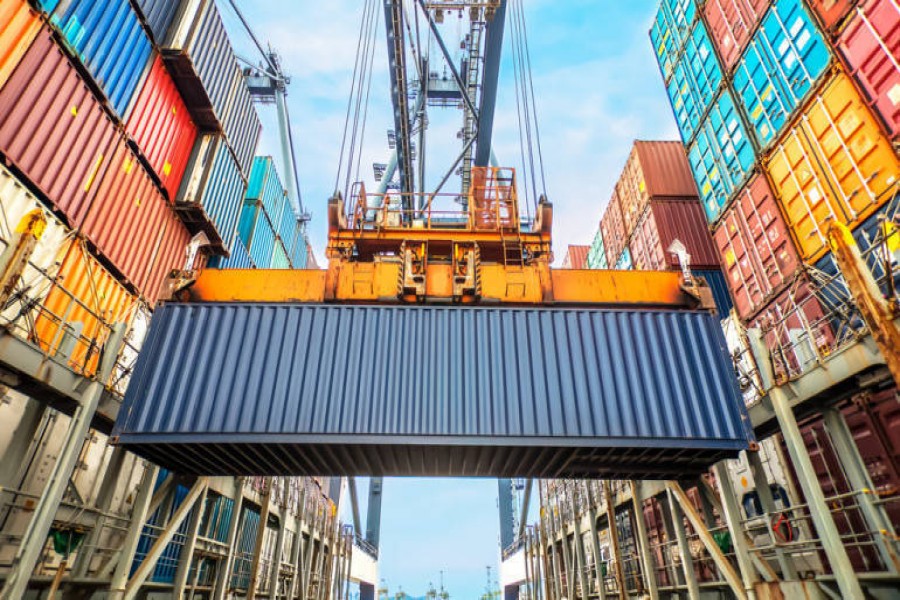As Bangladesh is set to graduate from Least Developed Country (LDC) status by 2024, a number of challenges and difficulties loom large on the horizon. A big blow may come from the erosion or elimination of preferential market access to different countries.
The policymakers have identified Bilateral Free Trade Agreements (BFTA) as a crucial instrument to deal with the post-LDC challenges. The country has been negotiating with some of its trading partners to sign BFTA for the last couple of years. There is also a move to sign some Preferential Trade Agreements (PTAs), where FTA appears difficult.
In the latest trade policy review in the World Trade Organisation (WTO), Bangladesh stated that the country is redesigning its trade strategy considering the post-graduation reality. The written report said: "Under the strategy, it will create competitive edge by diversifying export basket of goods and services, expanding existing markets and exploring new ones and taking initiatives to promote trade through Free Trade Agreements (FTAs)."
The WTO secretariat report also observed that Bangladesh attached importance to deepening intra-regional trade ties in view of its graduation prospects. "It has taken initiatives to negotiate regional trade agreements (RTAs) with a few countries," it added. "Bangladesh is a participant in several slow-progressing RTA initiatives, of which only the Asia Pacific Trade Agreement, the South Asian Association for Regional Co-operation (SAARC) Preferential Trading Arrangement (SAPTA) and the South Asia Free Trade Agreement (SAFTA) are in force; many of these arrangements have had relatively limited product coverage and trade importance for Bangladesh until now." The other RTAs are: Framework Agreement on Bay of Bengal Initiatives for Multi-Sectoral Technical and Economic Cooperation (BIMSTEC) FTA, Trade Preferential System among the OIC countries (TPS-OIC) and Developing-8 (D-8) Preferential Trading Arrangement.
Thus Bangladesh is basically relying on few RTAs with limited outcomes though the country is enjoying preferential market access, to varying degrees and extent, in more than 40 countries. The country has also 49 bilateral trade agreements with more than 40 countries and all these agreements are general in nature.
More than a dozen of BFTAs and BPTAs are now under consideration and negotiation. The countries include Sri Lanka, Bhutan, China, Malaysia, Indonesia, Turkey, Nigeria, Mali, Macedonia, Myanmar, Maritus, Chile and Brazil.
TARIFF REGIME: But there is little progress in the negotiations. The first reason may be the country's high and less-predictable tariff regime. Despite gradual liberalisation, the simple average applied Most Favoured Nation (MFN) tariff of Bangladesh stood at 14.80 per cent in FY19. The binding coverage is 19 per cent of all tariff lines and all at ad valorem rates. As the average final bound tariff rate is 160.0 per cent (estimated based on FY19 tariff schedule), overall gap between the simple averages of MFN applied and bound rates stands at 147.2 percentage points. Lower binding coverage couple with the big gap make the country's tariff regime unpredictable. So far, in a few cases Bangladesh has taken the advantage of big tariff gap by hiking tariff rates on different products. But still there is a rigid stance in reducing the tariff rate and simplifying the tariff regime while negotiating with a trading partner. Local industries are protected mainly through tariff along with para-tariffs. Currently, Bangladesh has 7,135 tariff lines for import and around 46 per cent of the total tariff lines are subject to maximum or 25 per cent customs tariff.
Tariff reduction or elimination is the first thing to negotiate for any BFTA, or even for any BPTA. Without any breakthrough in tariff reduction, no FTA is possible.
LDC-CENTRIC APPROACH: Second reason is LDC-centric approach in trade negotiation. It means Bangladesh always wants to open its market at later stage and for limited goods. It prefers long negative list on the plea that being a LDC, it is not obliged to open up its market earlier.
But BFTA is basically a reciprocal deal and without adequately reciprocating to the partner country, no effective deal is possible.
The country is on the path of LDC-graduation. Its uplift from low-income category to lower-middle income category in 2015 also makes it more challenging to continue the traditional trade liberalisation process. The 'double graduation' creates additional pressure for opening up the economy further at a faster rate.
COMPREHENSIVE ECONOMIC PARTNERSHIP AGREEMENT: Changing pattern of FTAs globally may be the third reason. The traditional approach of phase by phase tariff reduction on goods is no more a major negotiating point. Different developed and developing countries are now more interested on FTA in goods and services along with investment. Instead of BFTA on goods, negotiation on comprehensive economic partnership agreement (CEPA) is now getting priority. In fact, Bangladesh signed a CEPA with India last year; but the negotiation is yet to start.
NON-TARIFF MEASURES, NON-TARIFF BARRIERS: Fourth reason is partial focus on non-tariff measures (NTMs). Country's exporters used to argue that they are facing a series of NTMs and some of those turned into non-tariff barriers (NTBs) in different markets. As a result, country's export is not growing as desired. But, importers in the country also face many NTBs which gets less attention. When there is a talk on free trade, NTBs is a critical thing and trading partners want that Bangladesh also reduce the barriers. It is not one-sided issue. The main problem for Bangladesh on addressing NTMs as well as NTBs is lack of capacity. From standard setting to quality control, there are many shortcomings. It will take time to improve the situation.
LACK OF EXPORT DIVERSIFICATION: Heavy reliance on ready-made garment (RMG) industry makes the thing worse. Export of RMG is mostly concentrated to developed countries. Disproportionate support to the sector has narrowed the policy space for other potential sectors.
All these need to be addressed in a planned manner so that the country can advance the potential BTAs in near future.


